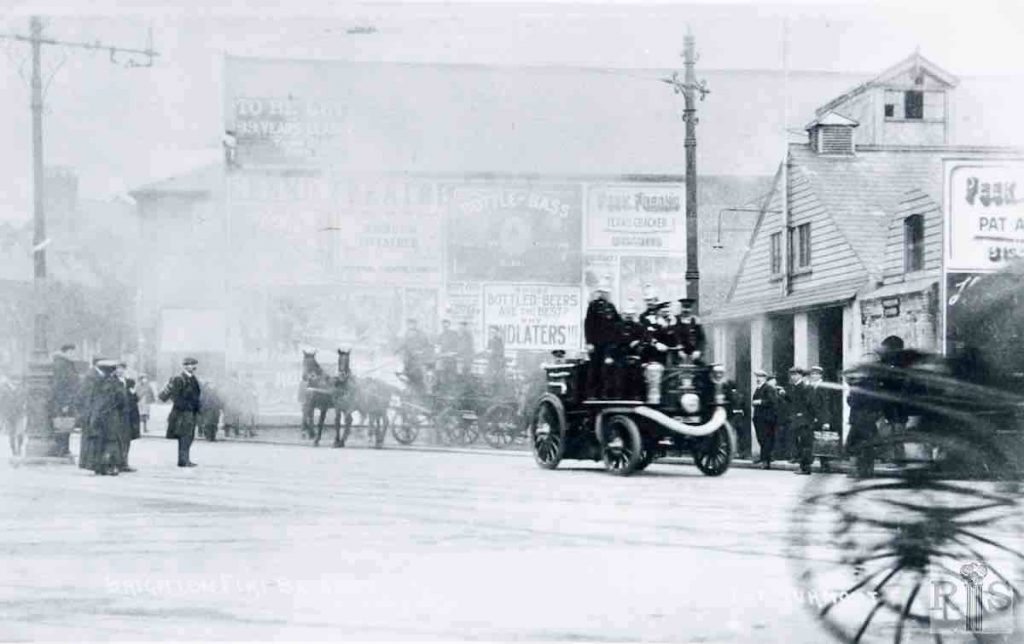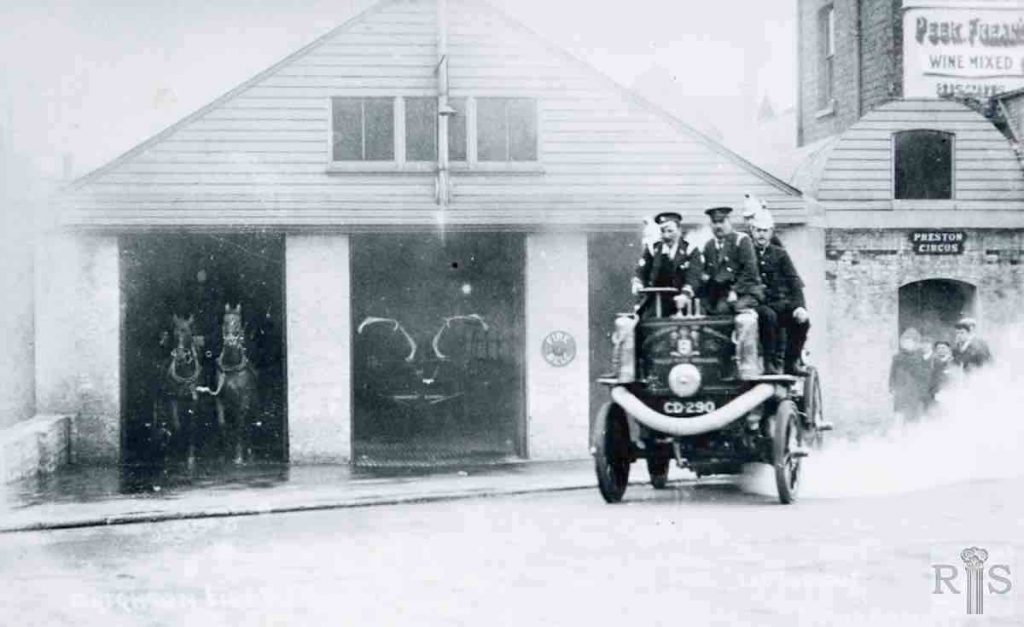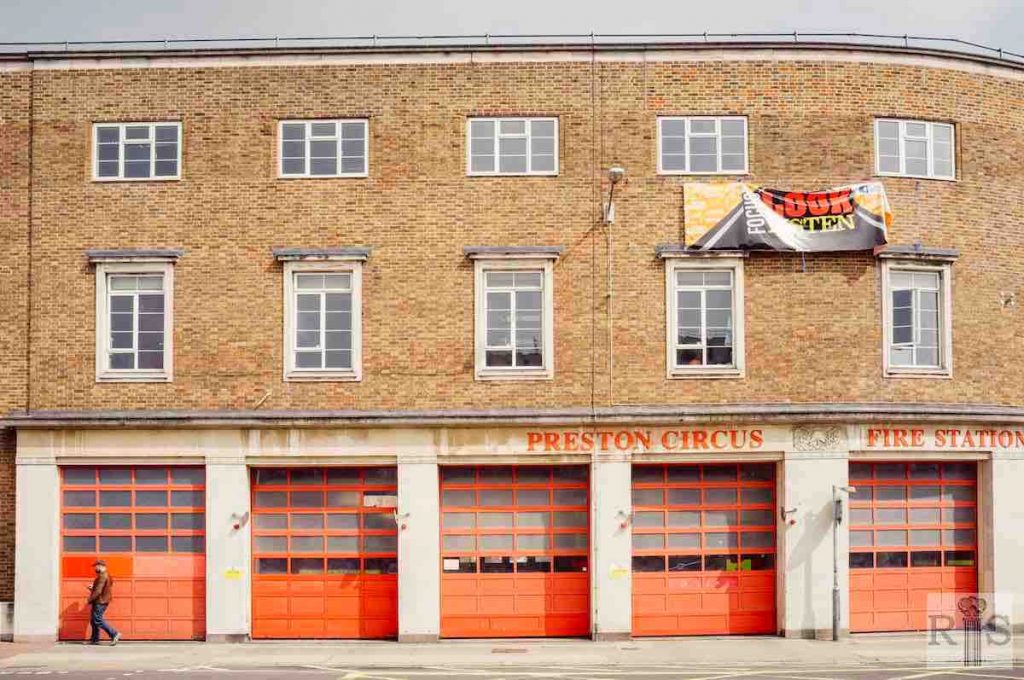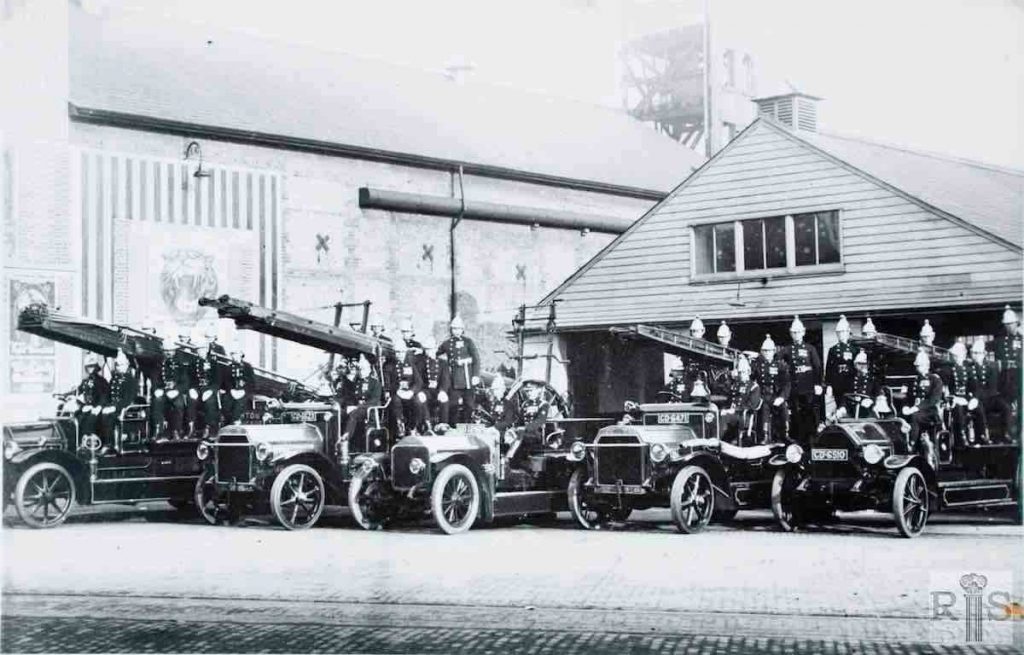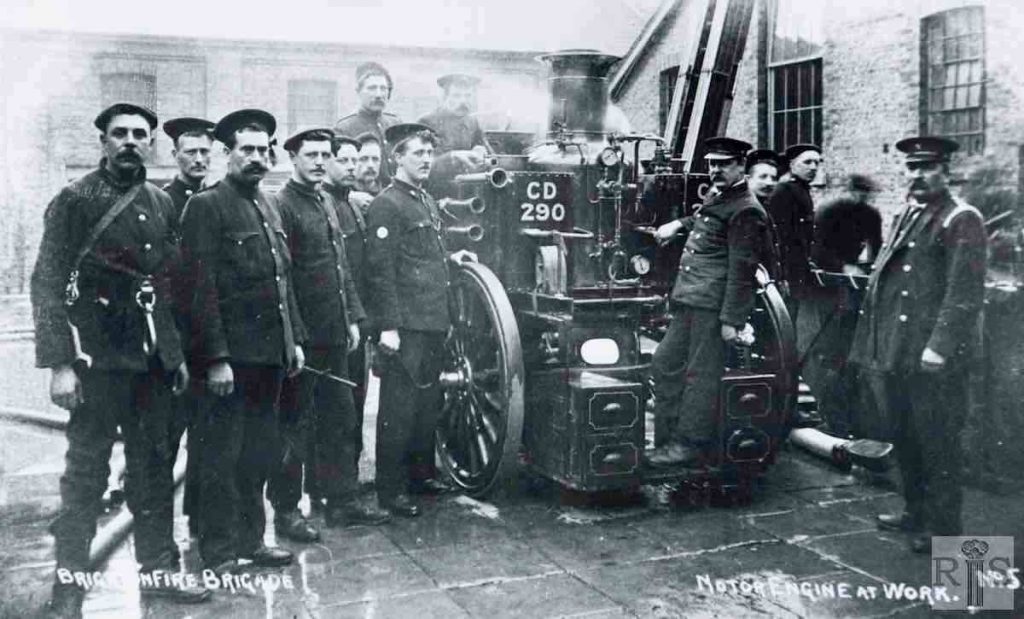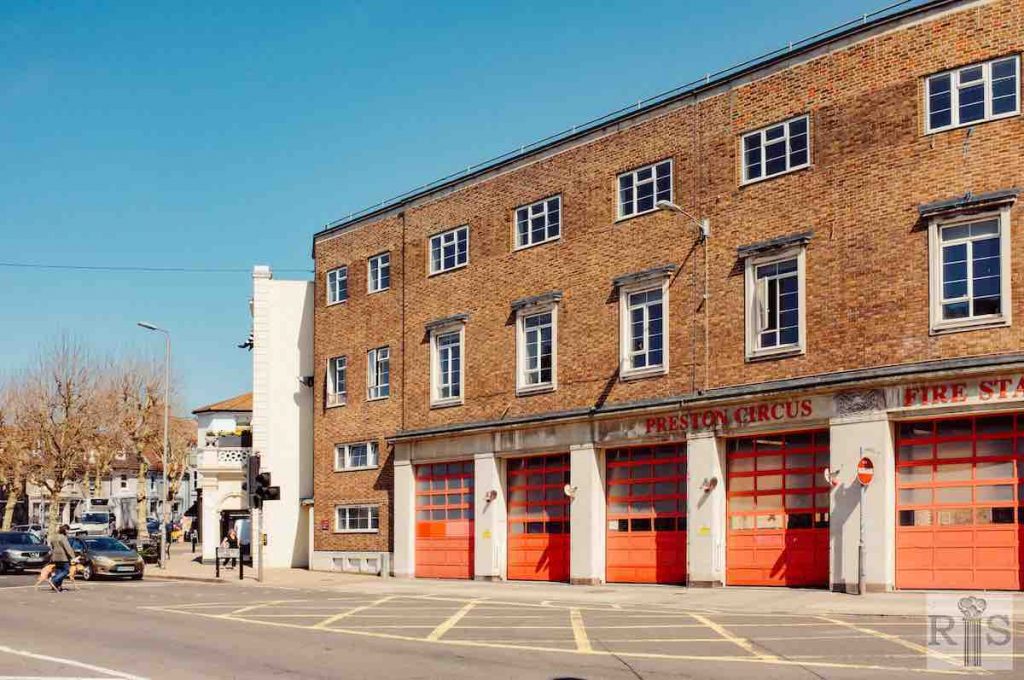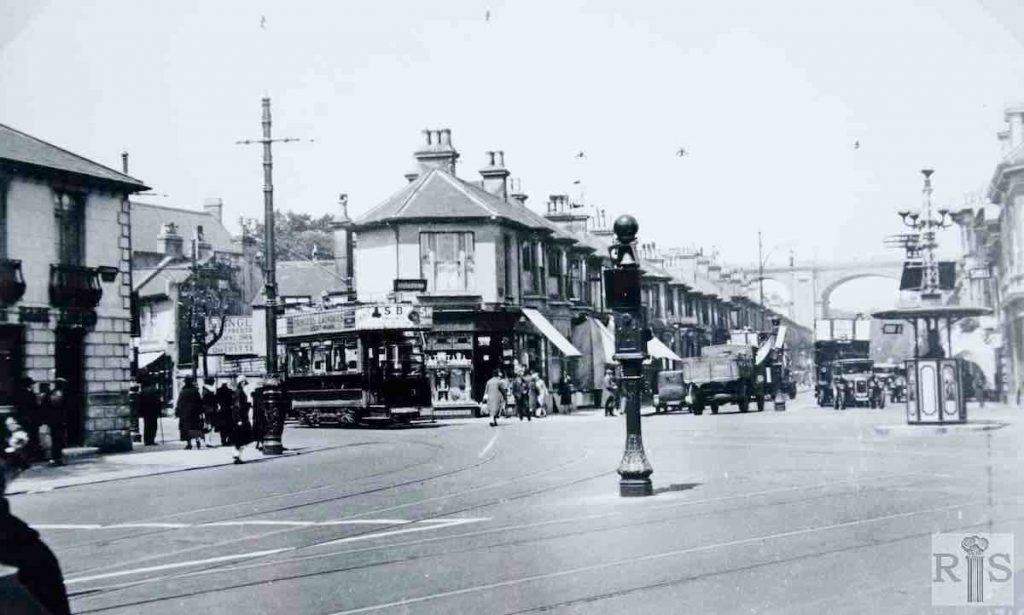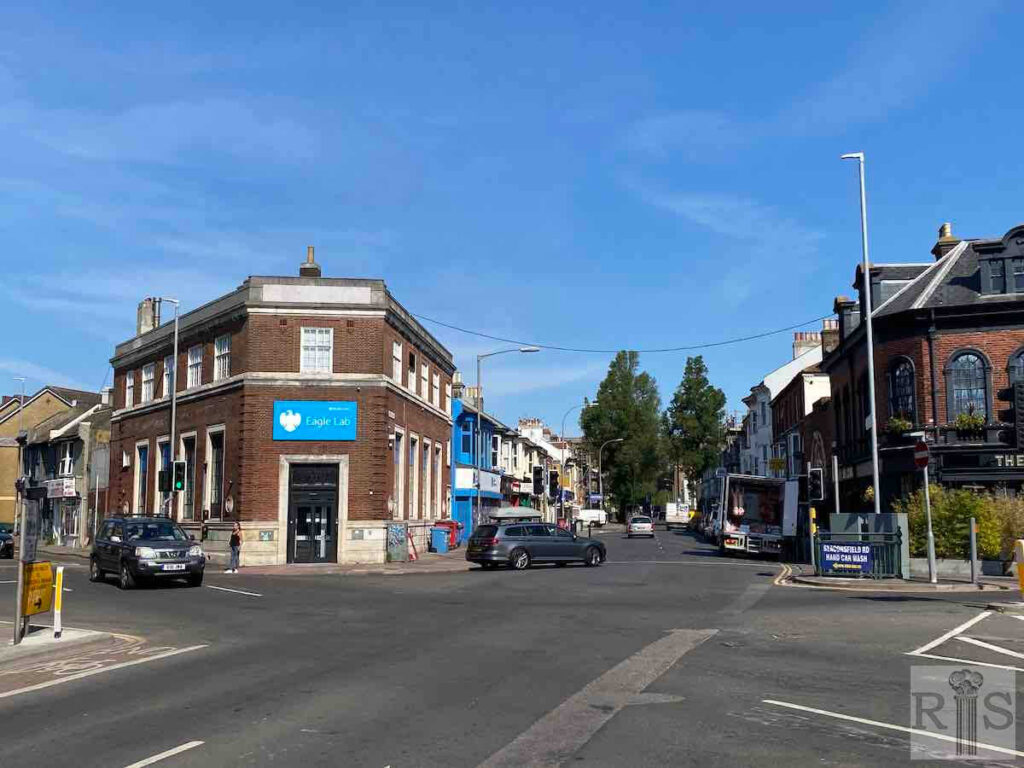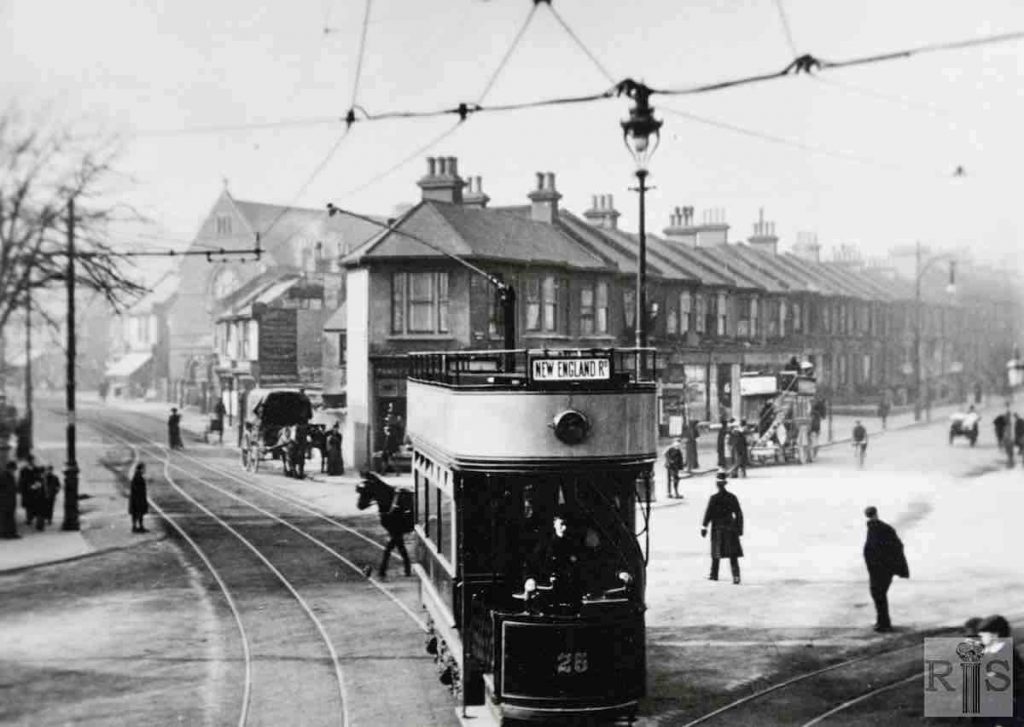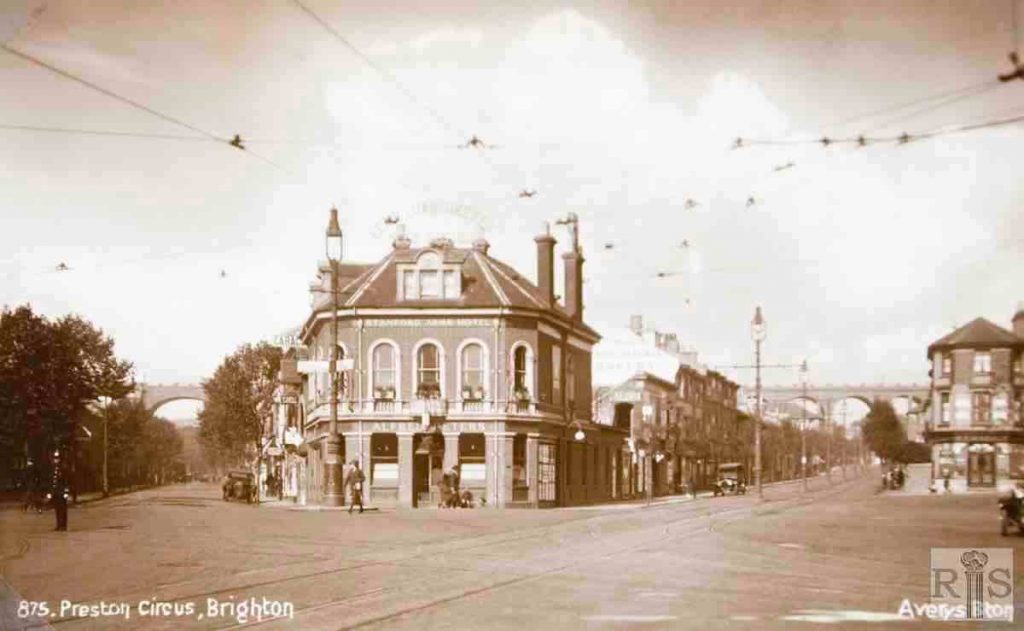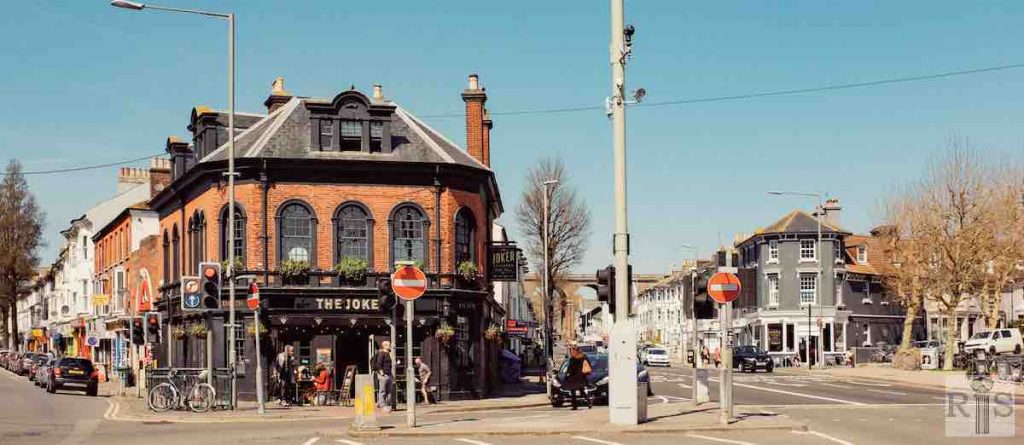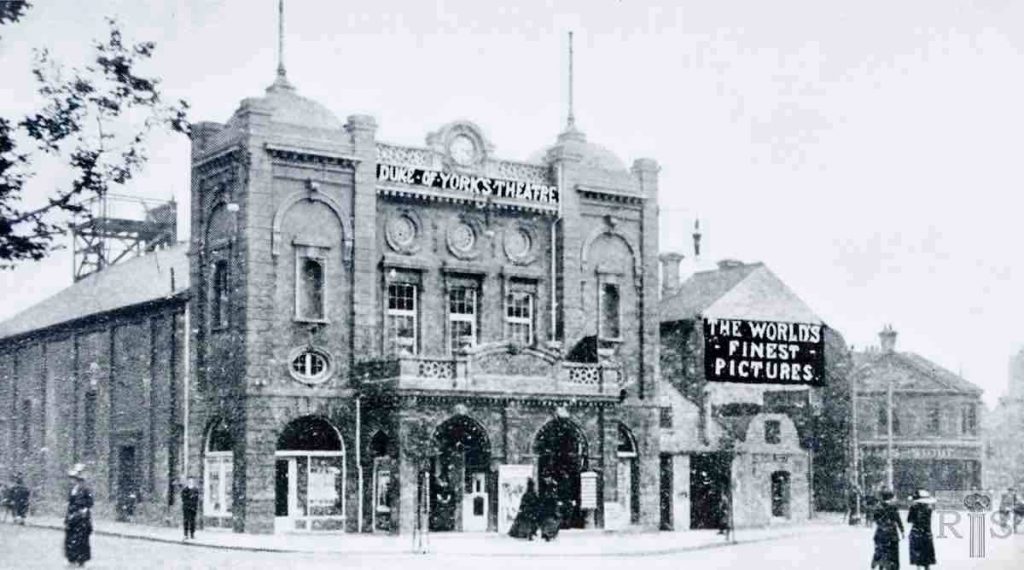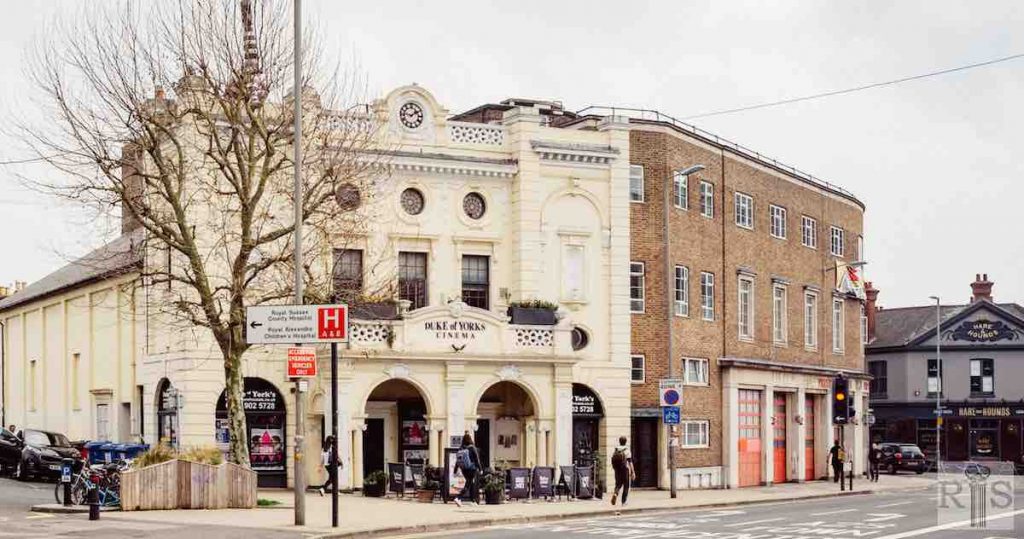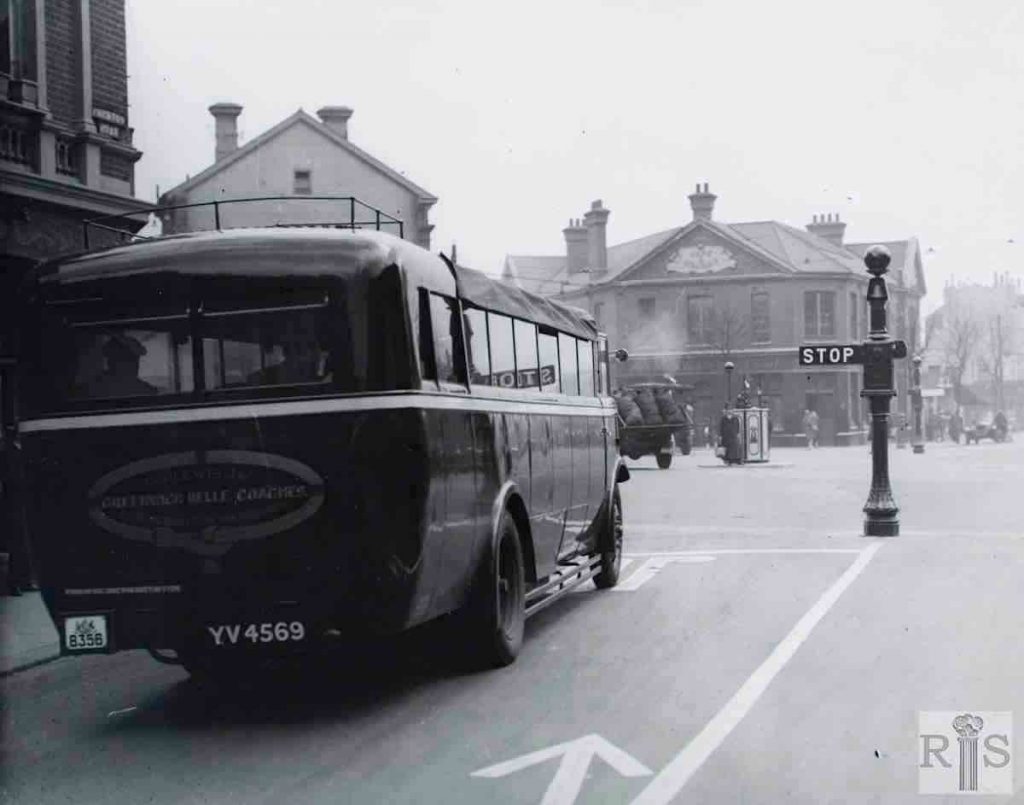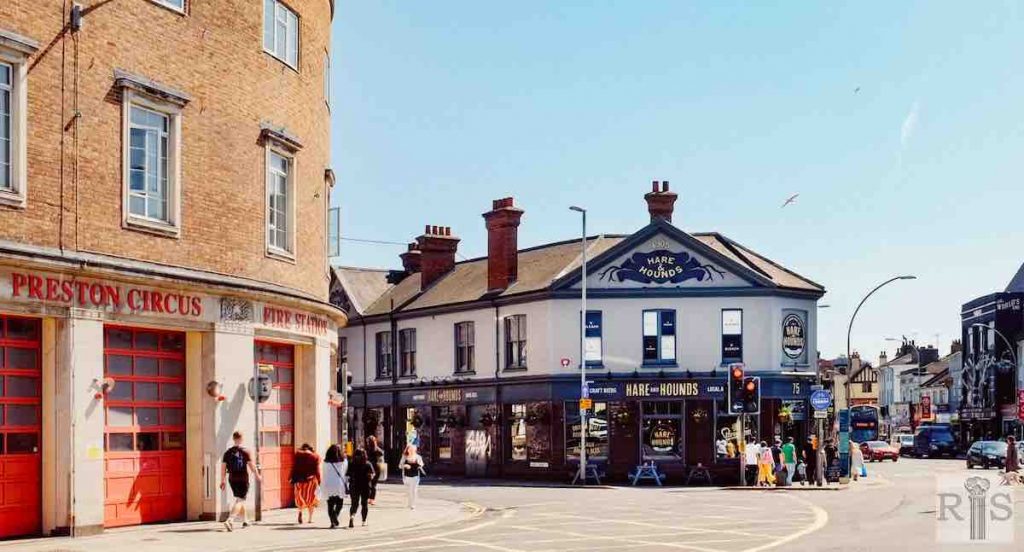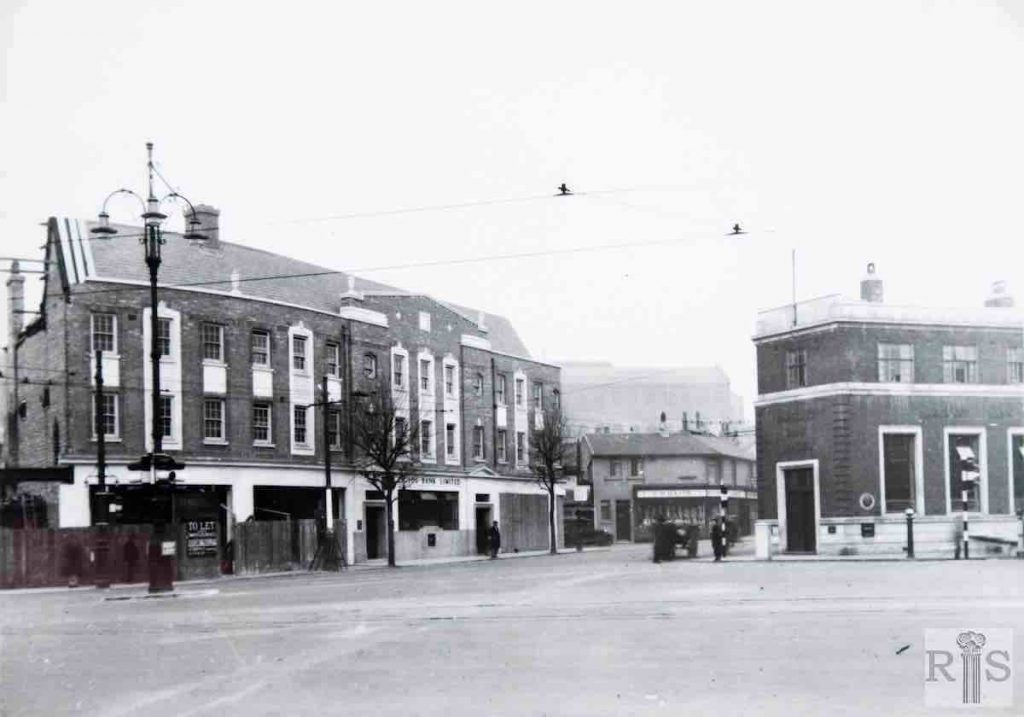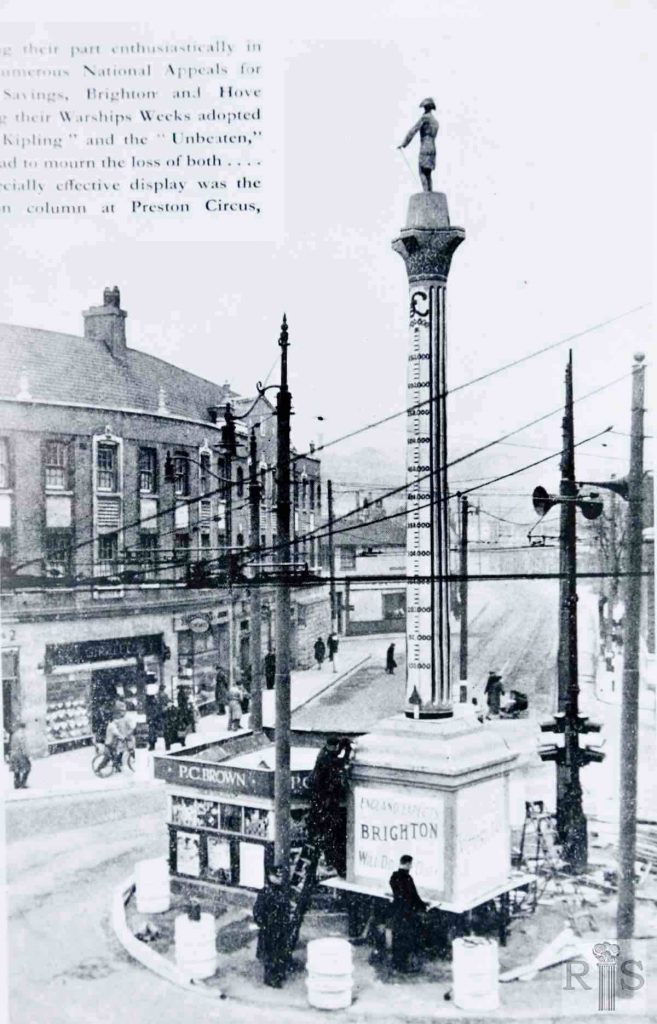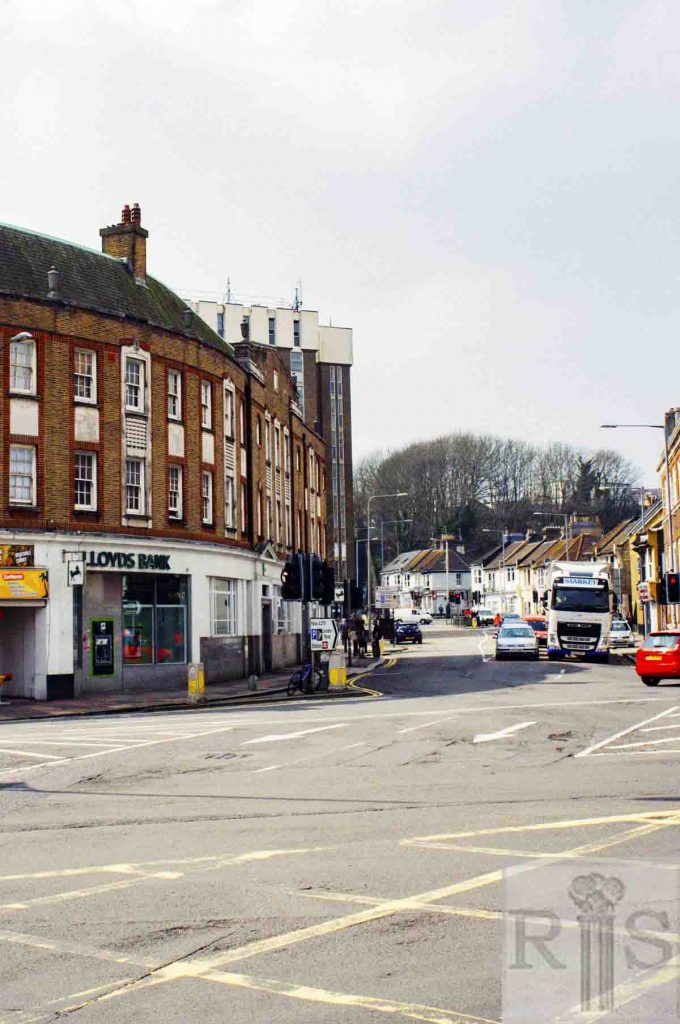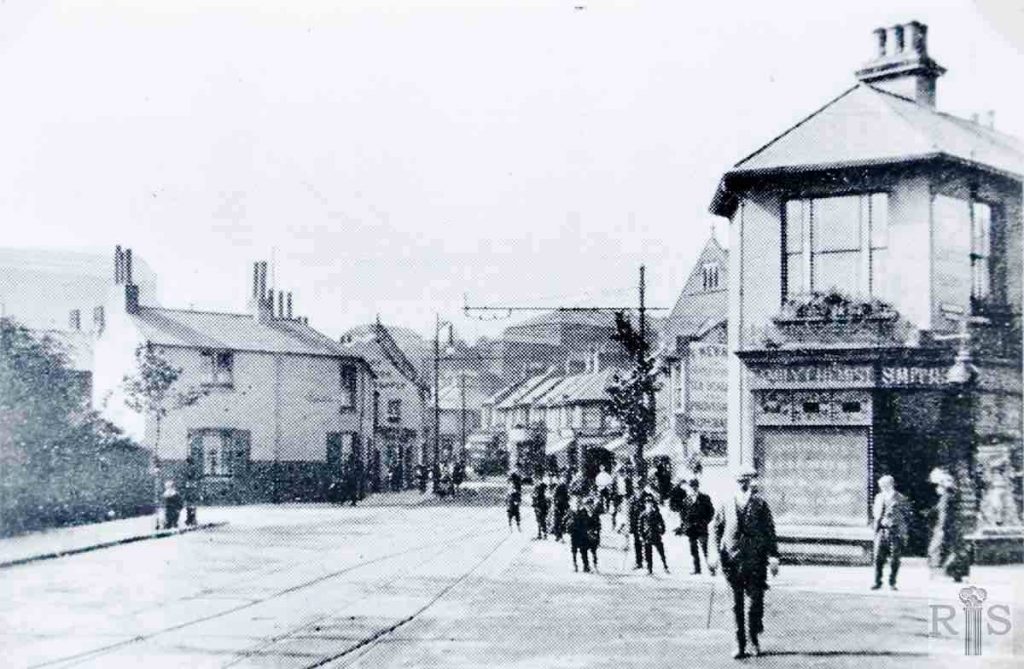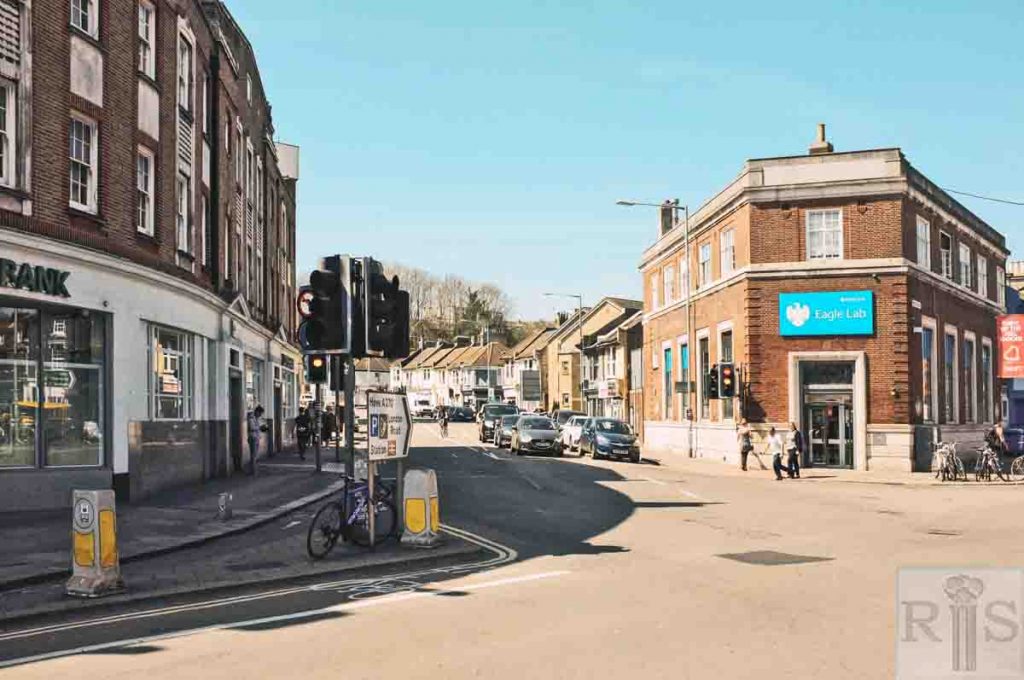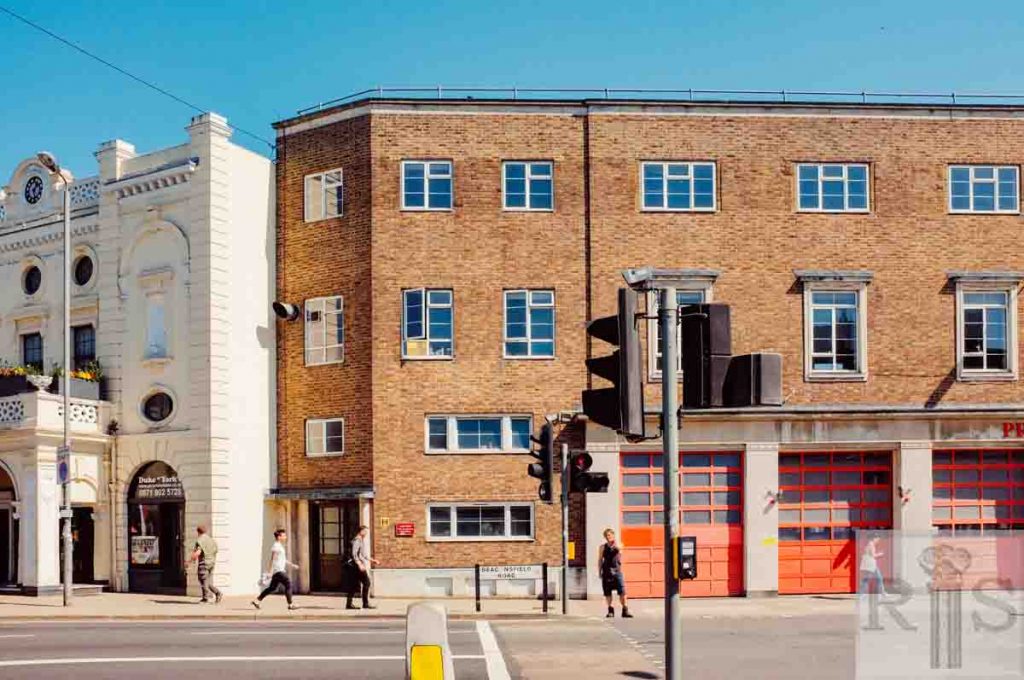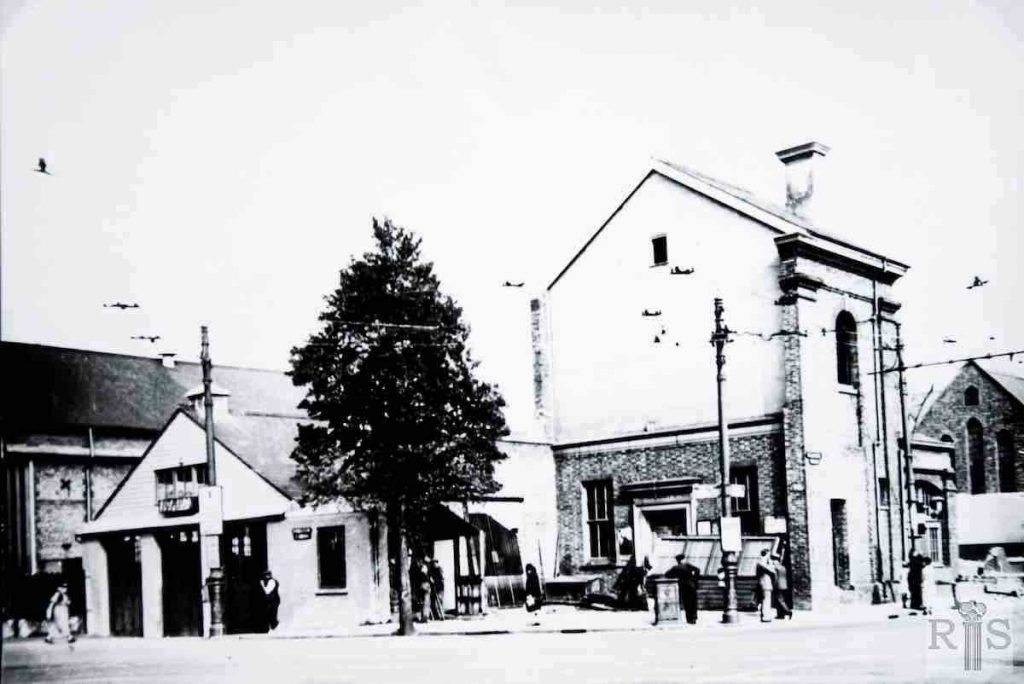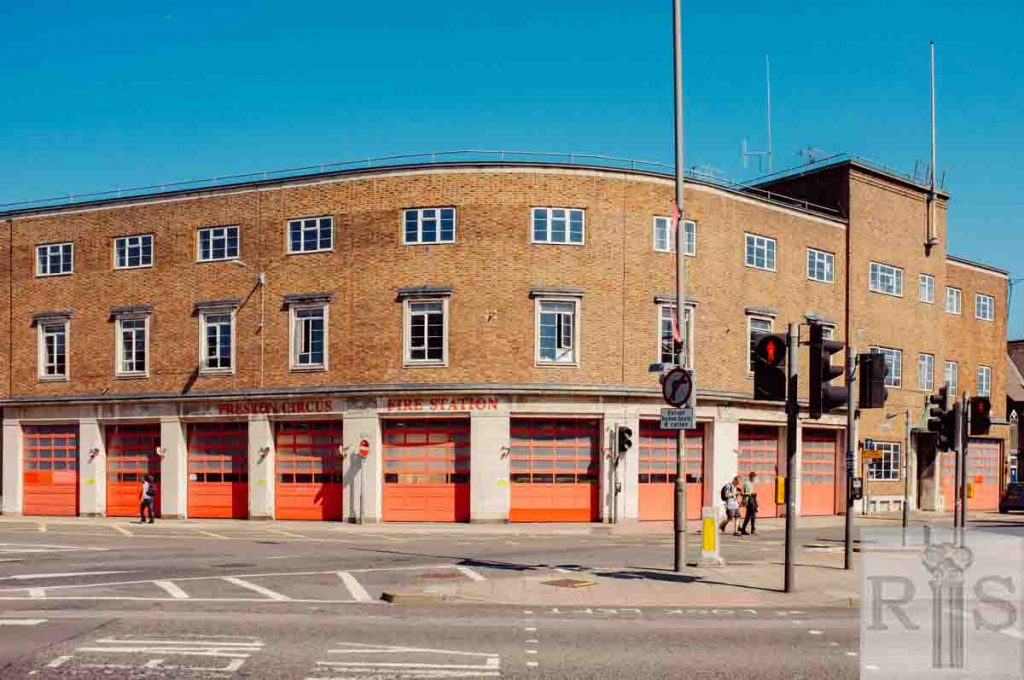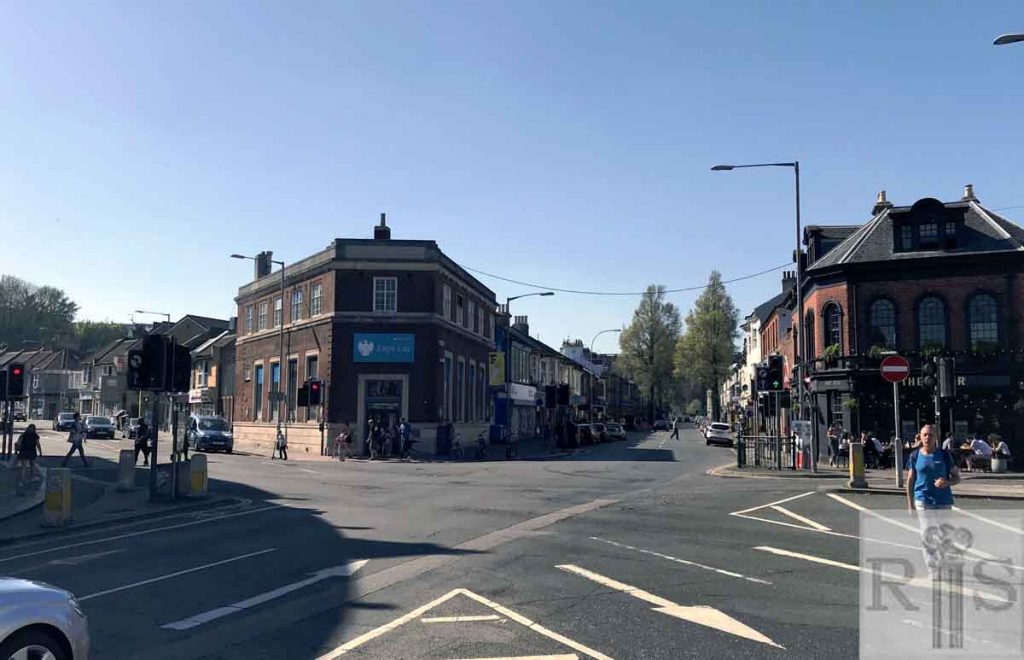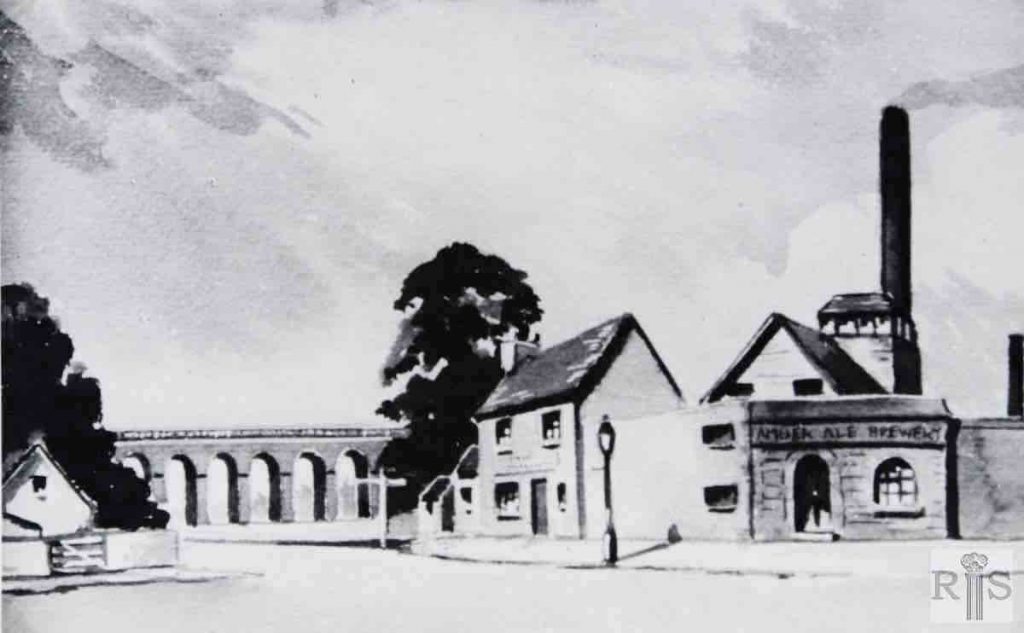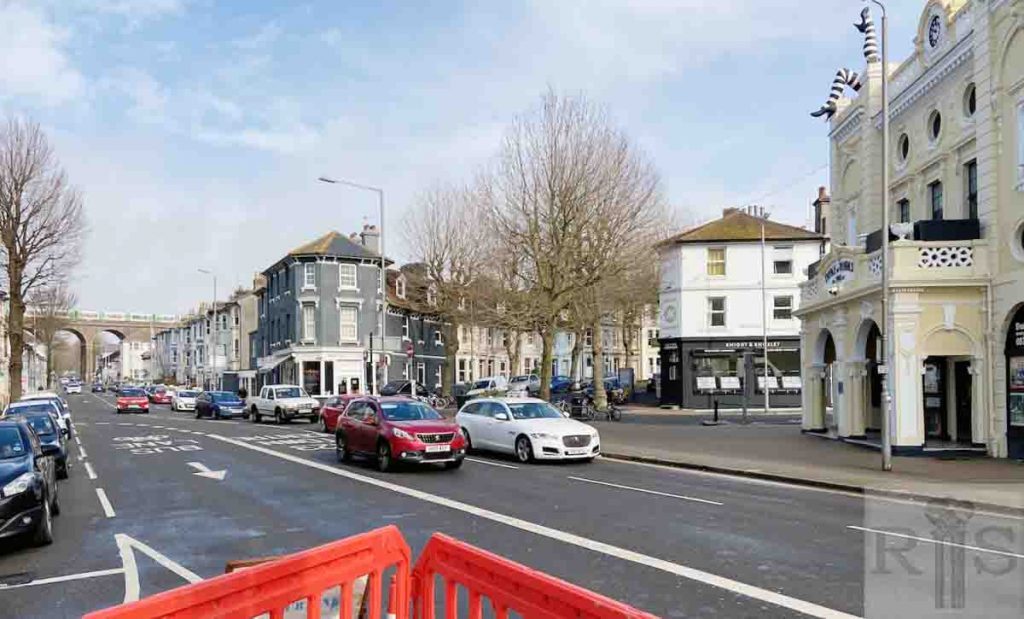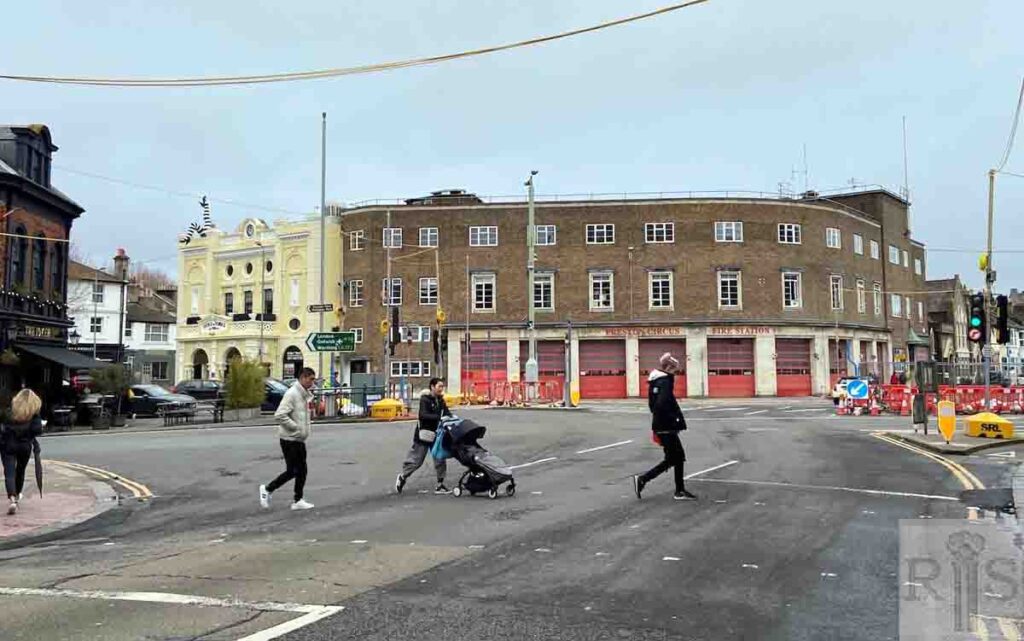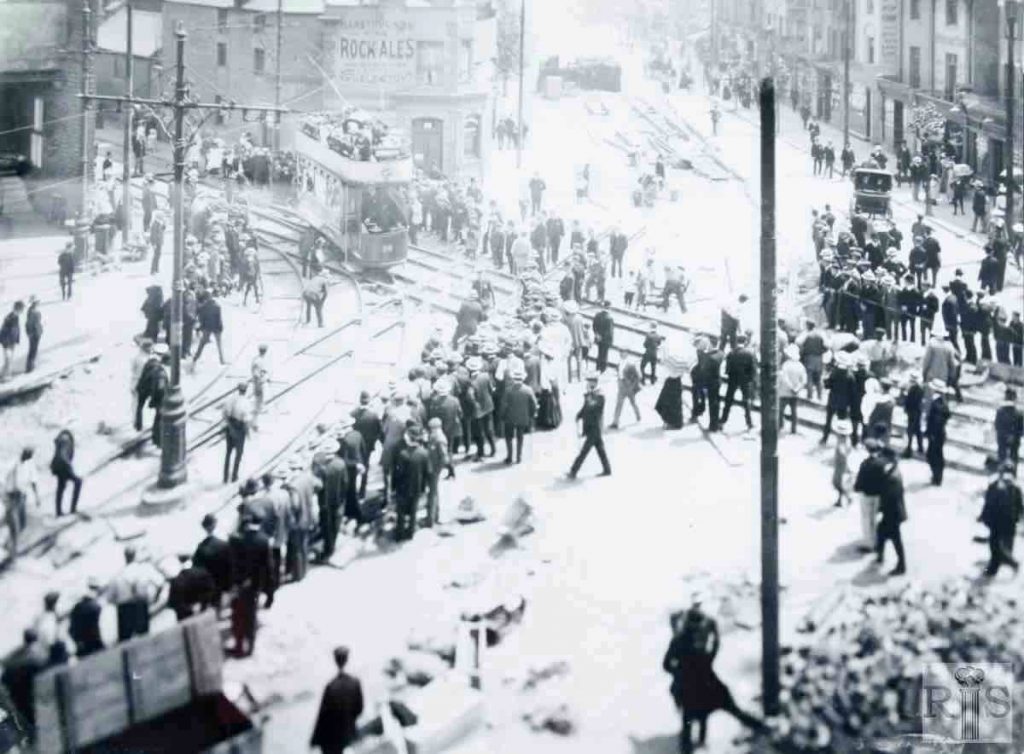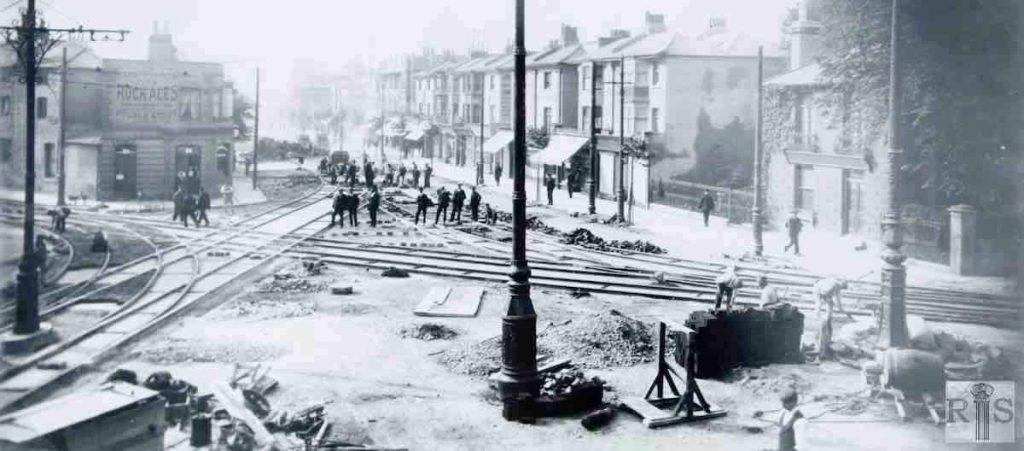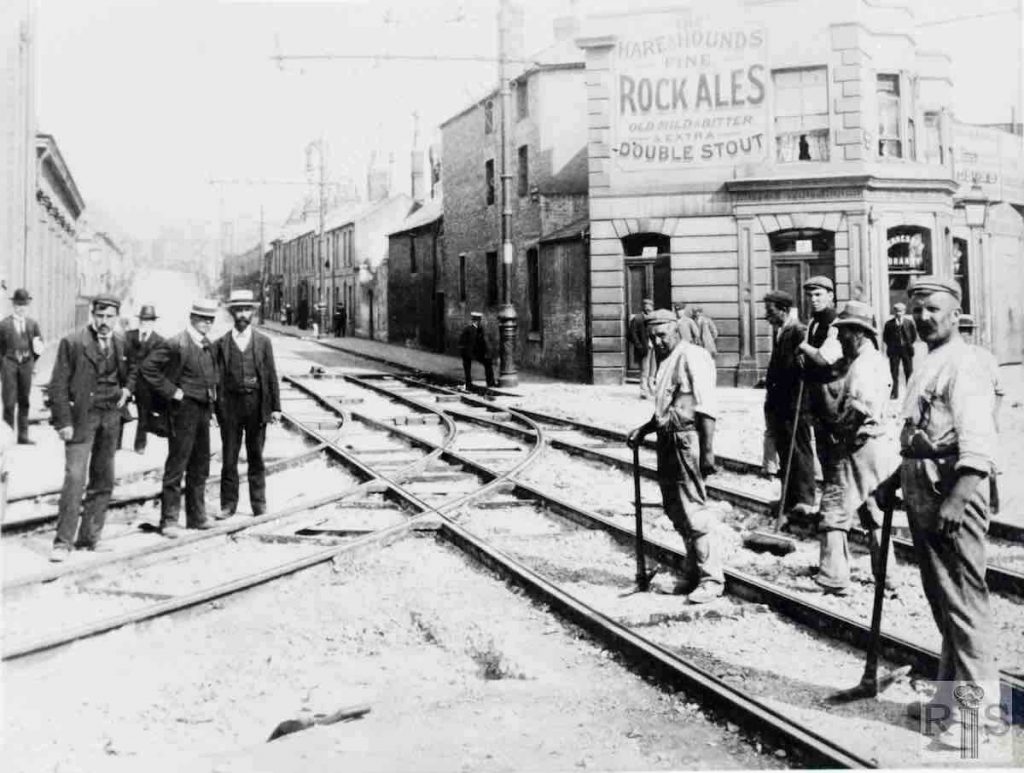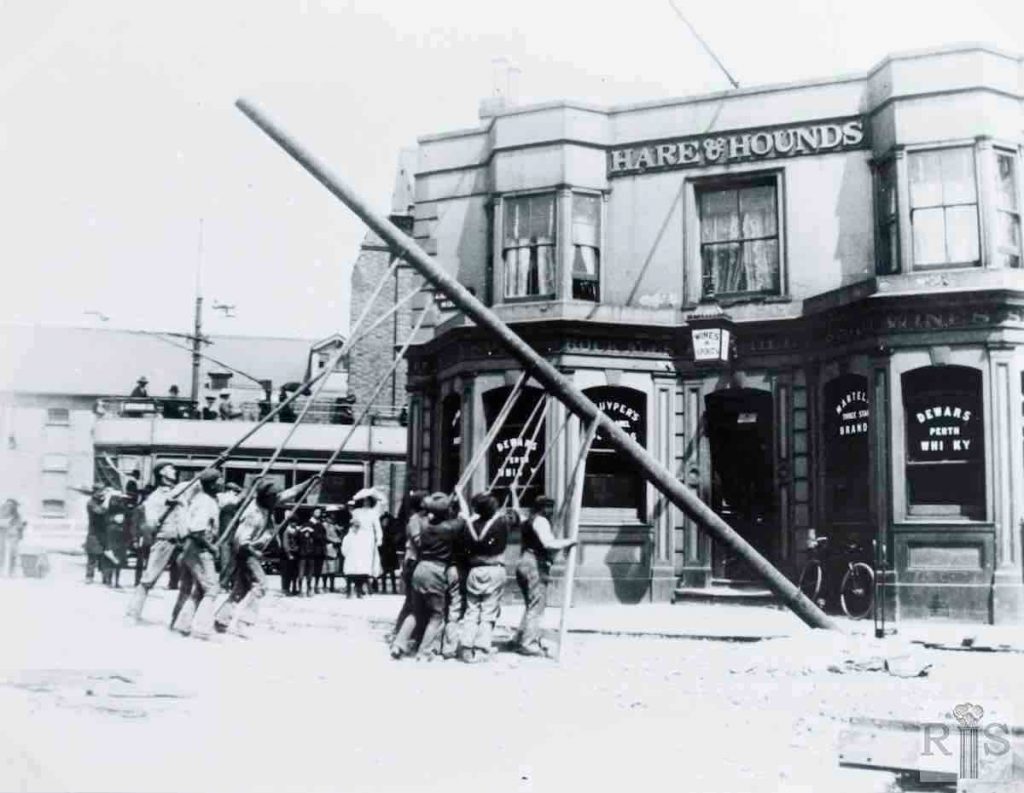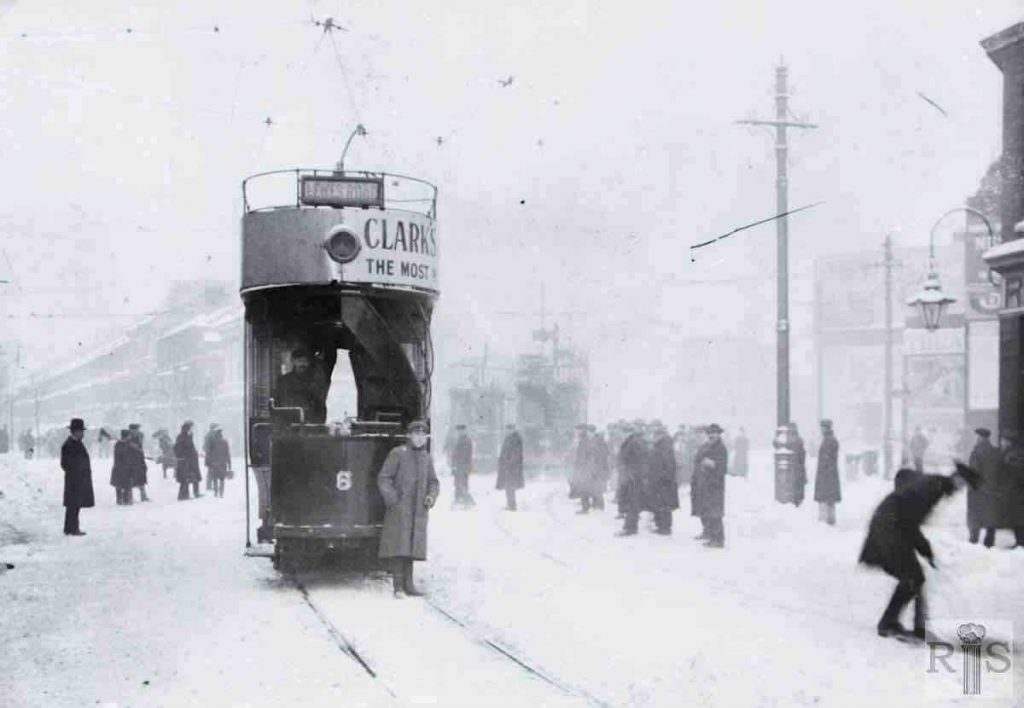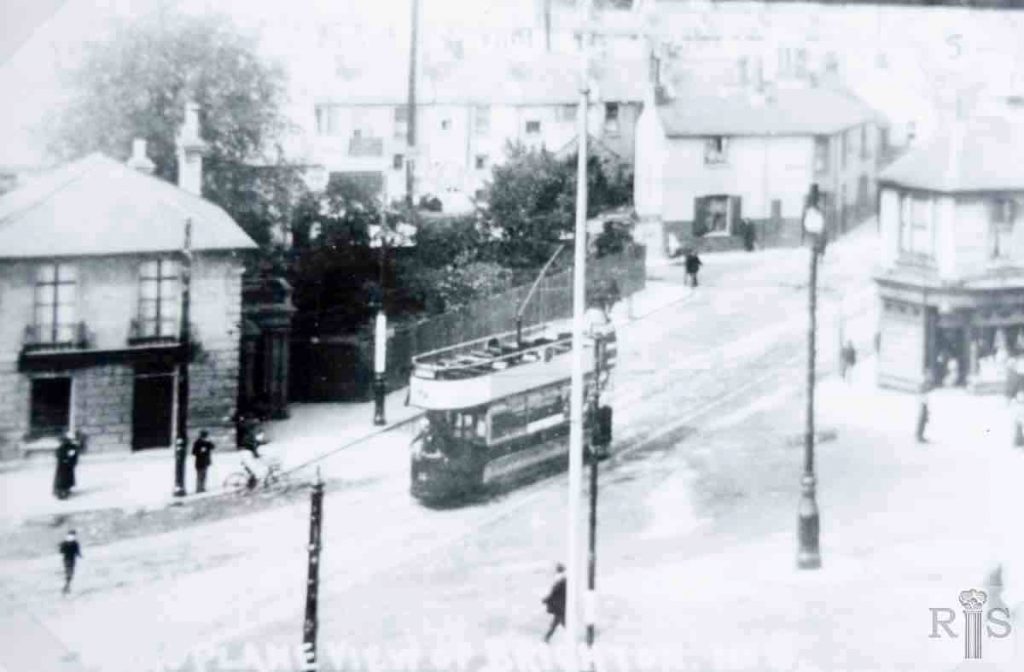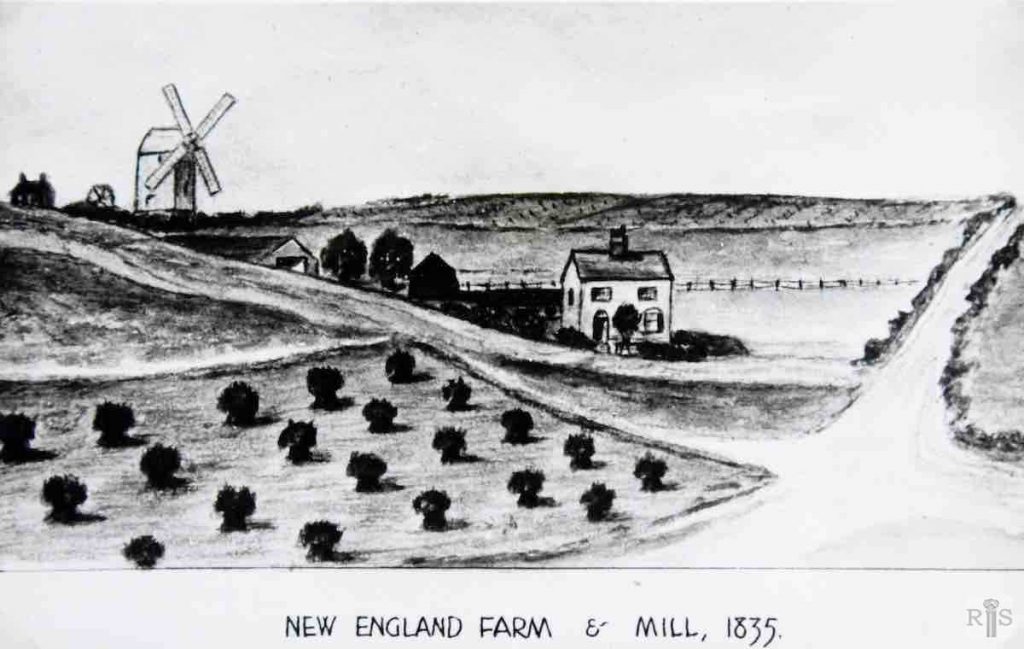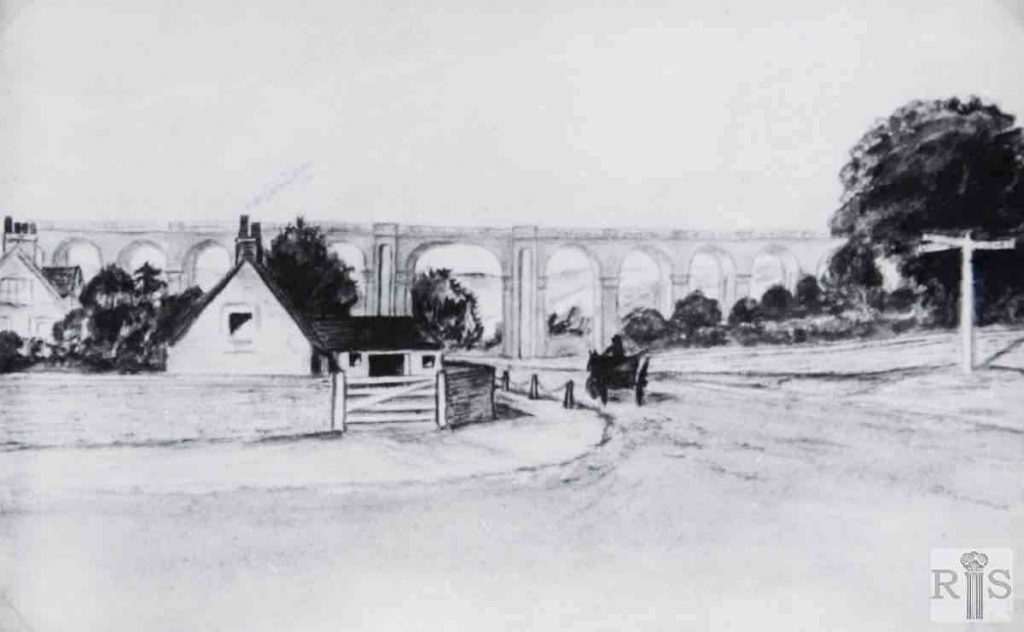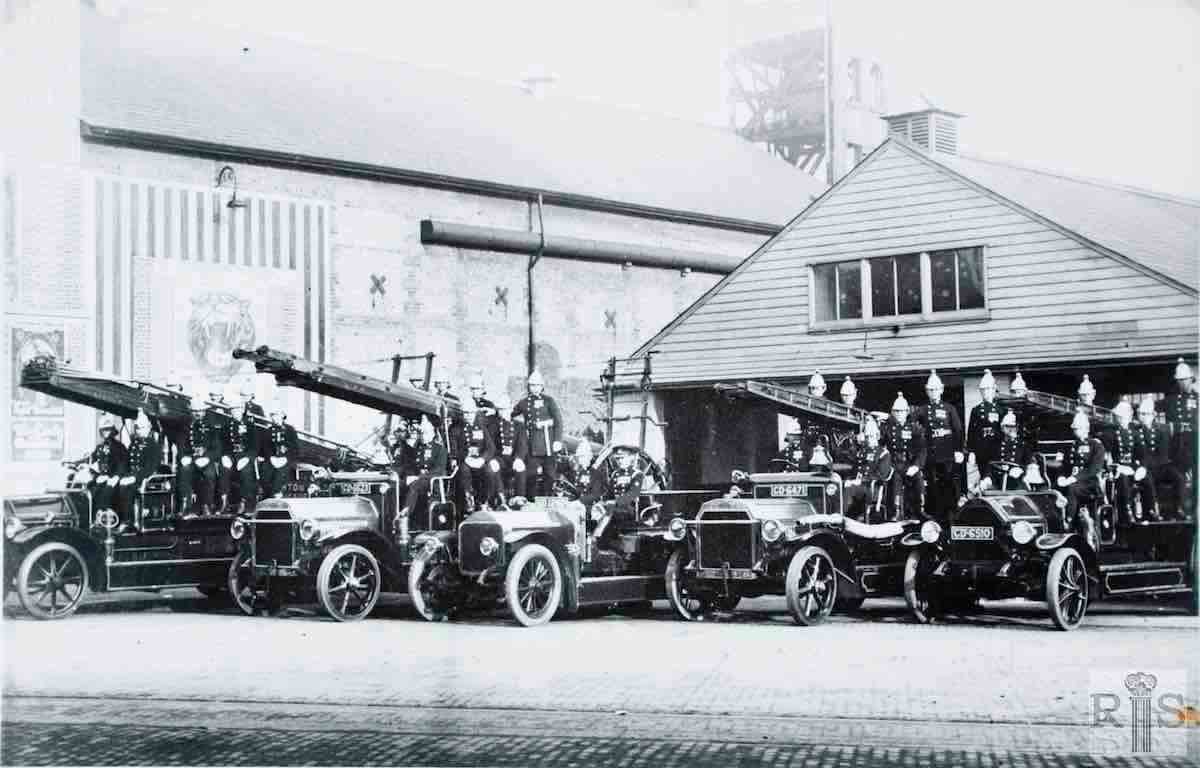
James Gray: Three photographs of the first Motor Fire Engine, CD 290, at the Preston Circus Fire Station in 1907. The low building, which also housed the horsed engines, remained until 1938, when the station was rebuilt. Note that the building, which is now the Duke of York’s Cinema, was advertised “to be let on 99 years lease”. Its association with the demolished Longhurst’s Brewery can be seen from the pulley hoist on the roof. Additional Information: Advertising Hoardings. jgc_10a_120
James Gray: Five fire engines and their crews, lined up for what was probably an annual event. The year is not known but there are many clues, which suggest that it was in the middle 1920s. First of all, the solid tyres of most engines, the early registration numbers, the bemedalled firemen, and the cinema advertisement of Sybil Thorndyke in ‘The Lady of the Camellias’. The tramlines of the Beaconsfield route ran directly in front of the Station. Additional Information: ‘The Lady of the Camellias’ was released in 1922, so most likely that this is the year. jgc_10a_126
James Gray: See caption jgc_10a_120 above. jgc_10a_121
2018: The old fire station was replaced with the current one in 1938. The Duke of York’s cinema can be seen protruding from the north end of the building. (Photographer: Nick Eastham)
James Gray: North end of Preston Circus. Tram emerging into London Road en route to the Aquarium terminus. Semaphore Signal Arms operated by a Policeman in his central covered box then controlled traffic. This provides evidence of the approximate date of the photograph. The signals were introduced here early in 1929 and replaced by electric automatic signals, of the present type, early in 1932 so the photograph was taken within those three years. jgc_10a_109
2020: Traffic at this normally busy junction is still controlled by electric automatic signals. The near absence of traffic and pedestrians on the day this image was taken is explained by the coronavirus pandemic then sweeping the world. The building at centre left of the James Gray image has been replaced by Barclays Bank (see also jgc_10a_124 below). The building just visible on the extreme right of the 1930s photograph can be seen fully in jgc_10a_125 and 108 below.
James Gray: View across the Circus to Preston Road and New England Road – 1903. Note that at this period there were no trams in London Road. Nos. 1 & 3 Preston Road were demolished and replaced by the present Barclays Bank building in 1930. jgc_10a_107
James Gray: The same area [as jgc_10a_106 below] 50 years later. The farm has gone, rows of houses have been built, the trams have arrived and the only thing unchanged is the railway viaduct. The farm was removed in 1871, when the Dairy Estate was developed and Argyle Road, Campbell Road and Roseneath Terrace were built. By 1875 houses had extended up New England Road as far as York Grove, and in that year Beaconsfield Road was commenced. This photograph shows an almost complete absence of traffic at what is now one of the busiest crossings in Brighton. Imagine carrying on a conversation in the middle of the Circus in 1952! jgc_10a_105
James Gray: In 1922 the policeman controlled traffic. A few years later semaphore signal arms were introduced and finally traffic lights and the central roundabout. jgc_10a_108
James Gray: Three aspects of Preston Circus – without comment. [See also jgc_10a_123 and 124 which are on this page.] jgc_10a_125
James Gray: Three aspects of Preston Circus – without comment. [See also jgc_10a_124 and 125 on this page.] Additional Information: Duke of York’s Cinema. jgc_10a_123
2018: The Duke of York’s Theatre now renamed the Duke of York’s Cinema with the 1938 fire station building alongside. (Photographer: Nick Eastham)
James Gray: Motor coach halted at the semaphore traffic signals, at the corner of London Road and Beaconsfield Road, in 1929. Following the introduction of similar signals at the bottom of West Street in December 1927, Brighton Council decided in late 1928 to install them at Preston Circus. Controlled by the policeman in his central box, they came into use here in March 1929. jgc_10a_127
2018: The building central in both images and housing the Hare and Hounds public house remains. The 1938 fire station building now occupies the facing corner. (Photographer: Nick Eastham)
James Gray: Rounding off the corner of London Road and New England Road. Formerly No. 74 London Road stood here with its back garden extending to Elder Place. By removing this old building and replacing it with modern shops and offices, opportunity was taken to widen the roadway and round off the corner. jgc_10a_128
2018: The crescent building has been extended since 1936 and the Vantage Point office building now towers behind it. The Barclays Bank building on the right is still the same. (Photographer: Nick Eastham)
James Gray: A photograph of the Circus during the 1939-1945 war, showing on the left the crescent of shops and flats built on this corner in 1935 to replace the old house and garden. Additional Information: “Nelson’s Column” war effort appeal jgc_10a_119
2018: View of Preston Circus looking up New England Road with Lloyds Bank on the left-hand side and the Vantage Point office block immediately behind. (Photographer: Nick Eastham)
James Gray: Three aspects of Preston Circus – without comment. [See also jgc_10a_123 and 125 on this page.] jgc_10a_124
2018: The corner building on the right in the 1912 image has been replaced by Barclays Bank. The site on the left of that image has since 1935 been occupied by the present crescent building with Lloyds Bank at street level. (Photographer: Nick Eastham)
James Gray: View of the old Fire Station buildings and Weights & Measures office. These buildings were cleared away and the present Fire Station erected in the following year. Here also the corner leading into Viaduct Road was rounded off. jgc_10a_129
2018: The same corner today occupied by the new fire station with the Duke of York’s cinema to the left as in the earlier image. (Photographer: Nick Eastham)
James Gray: The east side of Preston Circus during the 1930s showing the Duke of York’s Cinema, the old Fire Station, the last of the old Longhurst’s Brewery building, and in Viaduct Road, the Brighton Railway Mission. jgc_10a_130
2018: The 1938 fire station now occupies the bulk of this site.(Photographer: Nick Eastham)
James Gray: An early tram passing from Beaconsfield Villas into London Road, probably in the winter of 1904/1905. This was car No. 46 one of the series 41-50, which were supplied to Brighton Corporation by Dick Kerrs of Lancashire, in 1903. Additional information: Snow plough. jgc_18_027
James Gray: London Road and Viaduct Road in the 1850s. These drawings show the site of the present Preston Circus. On the left is New England Farm, and New England Road, then known as Montpelier Road. The viaduct had been built a few years earlier, in 1845, but there were no houses north of the farm until Preston Village was reached. The Amber Ale Brewery that covered the site of the present Duke of York’s Cinema dated from 1854. Additional Information: Copy of drawing based on 1850s photograph. jgc_10a_106
James Gray: This was copied from an old, faded and rather dirty photograph and in fact is clearer than the original. It is the work of Edward Fox, the Victorian photographer, and was taken in 1879 three years after Longhurst’s Brewery was opened here. Probably this is the oldest existing photograph of Preston Circus. The small centre buildings, of flints, were older than the remainder. jgc_10a_096
James Gray: No dates can be attributed to these two photographs, but almost certainly they date from the year 1902. In this one the summer crowd is watching the car make the turn from Viaduct Road into the Circus en route for Beaconsfield Road, where it then terminated at Stanford Avenue. In the lower photograph can be seen some track being laid in London Road. This was authorised by the Brighton Corporation Act, 1902, confirmed by an act of Parliament dated 8 August 1902, the line being opened in 1903. Note Henry Longhurst’s house at the corner of New England Road. Additional Information: © Philippe Garner. jgc_10a_111 and jgc_10a_112
James Gray: This photograph, looking north, shows the same standard as the previous photograph [jgc_10a_114], now in use supporting the overhead wires used by car no 6 with the surprising destination of Lewes Road, while there seems to be some congestion behind. The year is not known. There were many snowfalls in Brighton in the years before the 1st World War. jgc_10a_115
James Gray: This farm formerly stood in the angle formed by New England Road and Preston Road. It was much frequented by the Prince Regent and his friends, and as it afforded pasture for the Prince’s cows, it became known as the Princes Dairy. The house was removed in 1871. The Windmill is Lashmar’s Mill, later known as Hove Mill, erected in 1780. This stood just off the Dyke Road, on the site of Belmont, and was removed in 1848 to Clayton Hill, where it still stands. Additional Information: Drawings by J S Gray. jgc_18_037
